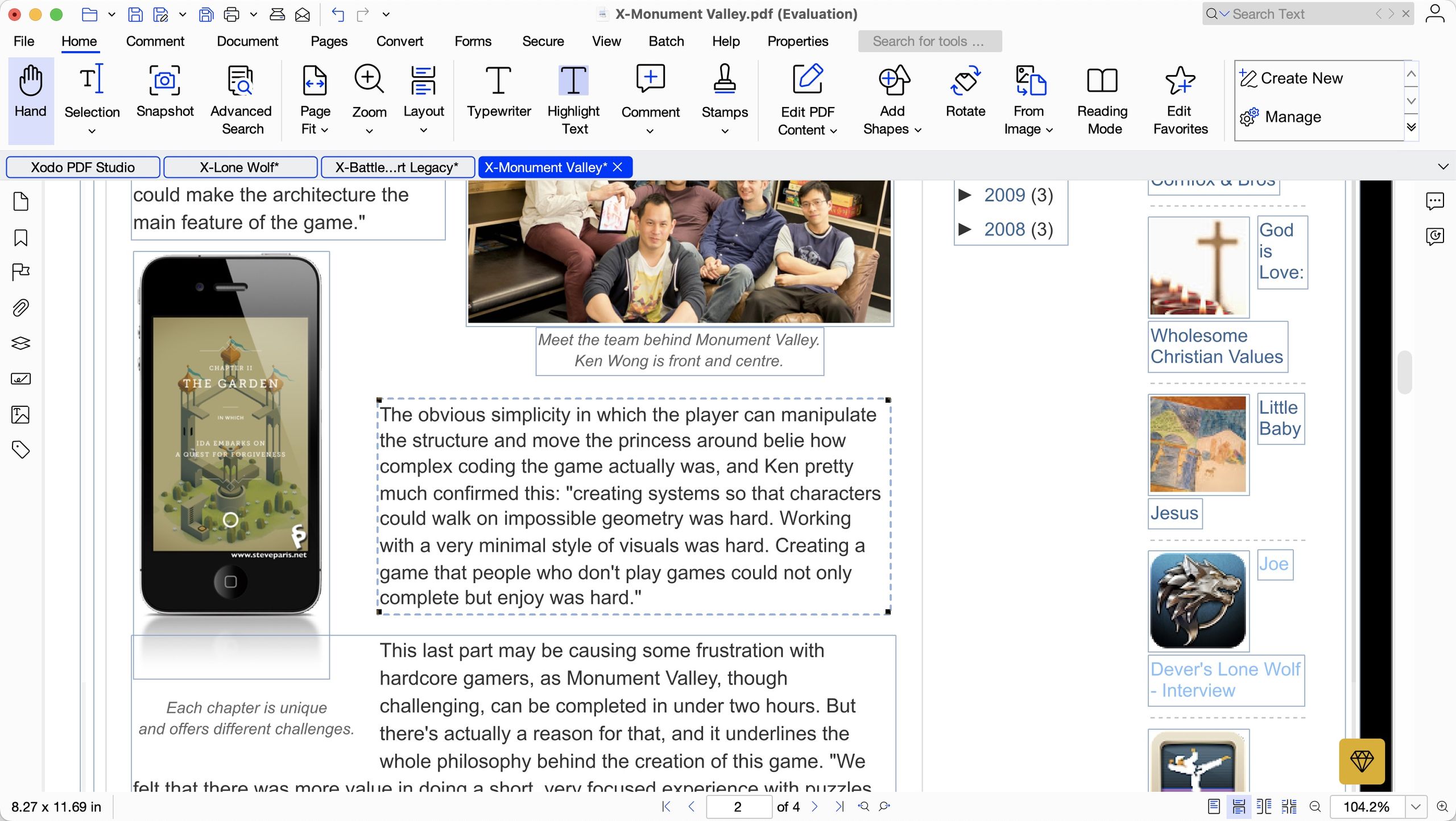
Why you can trust TechRadar
We spend hours testing every product or service we review, so you can be sure you’re buying the best. Find out more about how we test.
Last year, I reviewed Xodo, an excellent online PDF editor well worth checking out (you can read my review here). But did you know Xodo also offer a desktop version of their service for Macs, Windows and Linux?
After testing some of the best PDF editors and best free PDF editors, I was keen to see how the downloadable Xodo PDF Studio desktop version compares to its online counterpart, as well as other big players in the PDF space like Acrobat.
Xodo PDF Studio: Pricing & plans
- A choice of subscription or perpetual licence is always welcome, and should be praised. The free trial is very short, so run the tests you need quickly to decide if it’s worth paying for
Whether you opt for Xodo’s online service or its desktop version, it’ll cost you the same if you opt for a yearly contract (which would be the equivalent of around $10 a month per license). Choose to pay on a month by month basis, and the value changes to $13 online, and $20 for the desktop version.
If you’re sick to the back teeth of subscriptions, Xodo have you covered, offering you a perpetual licence for the Desktop app, for $240 per seat.
Curious about the service but don’t want to financially commit just yet? Then grab their 3-day free trial. All its features are unlocked and hopefully three days should give you enough time to check out the software, and decide if it’s right for you or not.
You can check it out over on the official Xodo website by clicking here.
Xodo PDF Studio: Interface
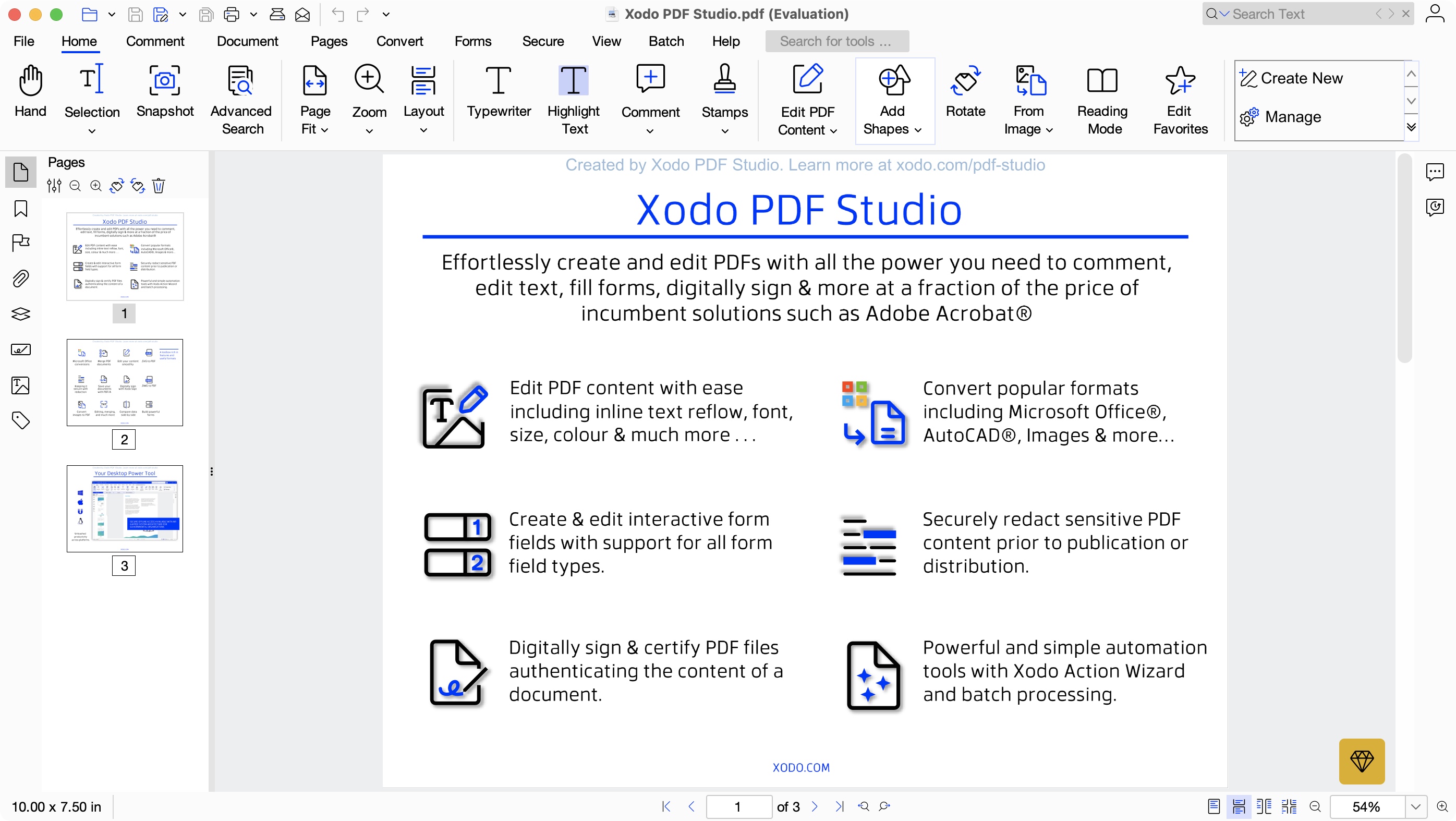
- Offering multiple ways of accessing the same tool is a very good thing… only the way the app’s menubar is setup could be given a little more love
Launch Xodo and you’ll find the interface to be… fine. It doesn’t scream ‘modern design’, nor does it bask in unwanted 90s nostalgia. It’s just… ok. All the tools and icons you need are located at the top of the window, in a basic black and blue minimalist style. It’s fine, really. It’s just not… that appealing.
What is a nice touch however, is that the first time you launch the app, it will automatically open a PDF which explains what its interface does. and where to find what you need. Full marks for that.
You’ll find the tools are accessible in multiple ways. For instance, by default, those you see are from the ‘Home’ menu, and pretty much all the ones you need are there, from selecting text, to searching inside the document, adding a comment, highlighting a section, even editing the PDF’s content, and adding shapes, among others.
However, above these large icons is a thin menu bar, which lets you focus on specific categories of tools, even though you can also access most of them from ‘Home’ already. For instance, if you want to add a comment, in ‘Home’, click on the ‘Comment’ icon to reveal a drop down list bearing multiple options. But if you were to click on ‘Comment’ in the thin menu bar instead, those icons are replaced with a new set, showing you all those that were in that drop down list we just saw.
It’s all the same tools, just available in different ways. It can get a tad confusing, especially as the selected menu in that thin menu bar only has a subtle blue line underneath it, which can be easy to miss, which can make you wonder why the icon you’re after isn’t displayed… until you realise you’re in the wrong menu.
Mac users have a third option, through the system’s own menu bar, from which you can also select all the tools you need. Don’t get me wrong: options are good, and being able to access the same tool in different ways is a good design decision… I just wish the app’s selected menu was at least more prominently highlighted to reduce possible confusion.
Xodo PDF Studio: Tools
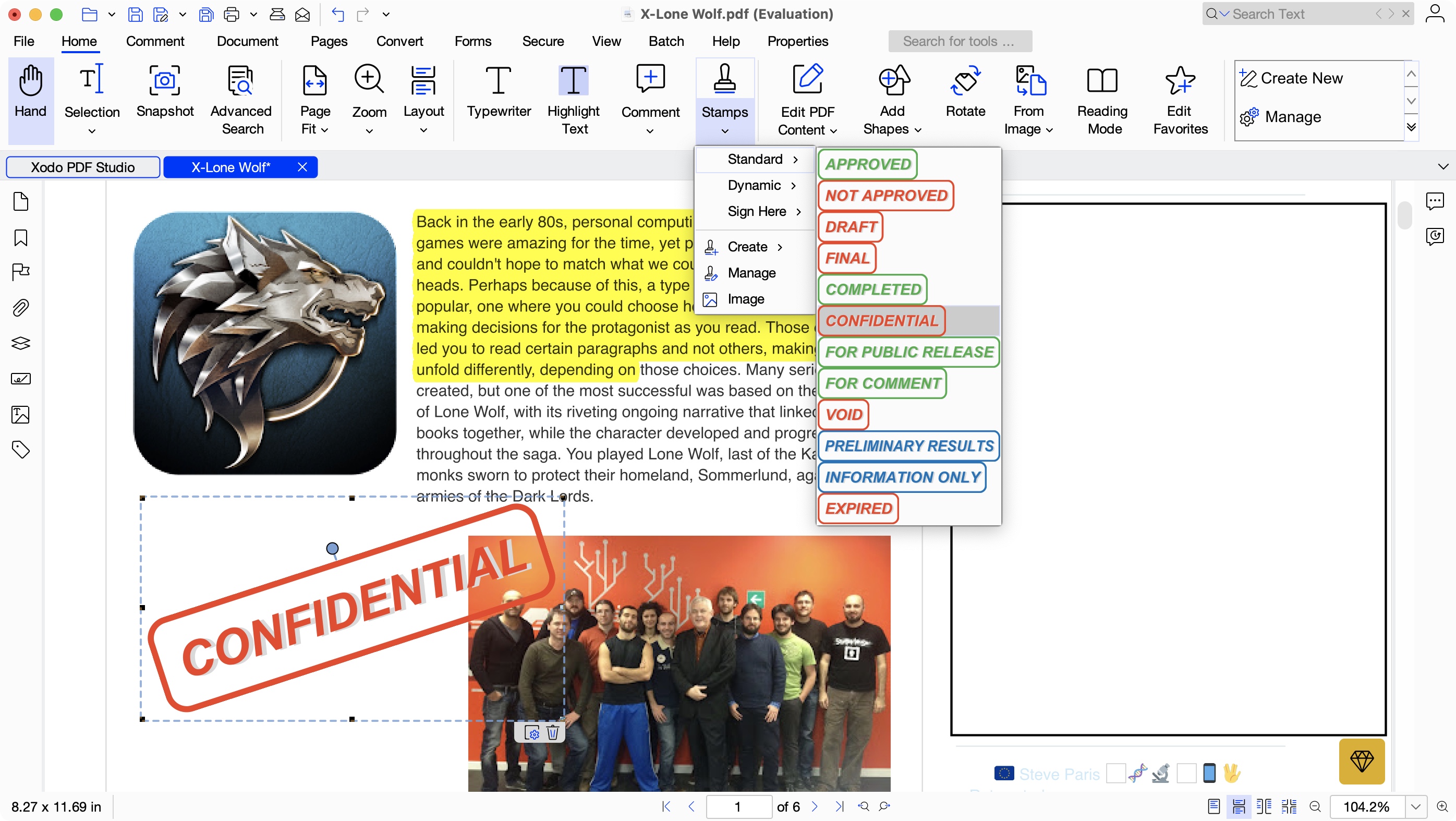
- Numerous tools, all incredibly easy to use, even if their layout at first can feel awkward
To start using the tools, take a quick trip to the ‘File’ menu to open an existing document, either from your computer, or directly through one of various online storage services, such as OneDrive, DropBox, GoogleDrive, or Xodo’s very own XodoDrive. This is also the place where you can create a new document, either from scratch, or by importing various files, like images, a scanned file, collate multiple files into one, or convert docs from MS Office or AutoCAD.
Once you’ve got a document loaded up, you’re free to annotate and alter it to your heart’s content. It’s actually pretty easy to make notes, highlight, draw on the PDF itself, add shapes to mask areas (although redaction is a much better tool for that should the info be sensitive and not to be divulged – Xodo supports this feature too).
Reordering pages and deleting some is a cinch and done through the left sidebar, but perhaps the most exciting option is the ability to edit the very existing content of a PDF.
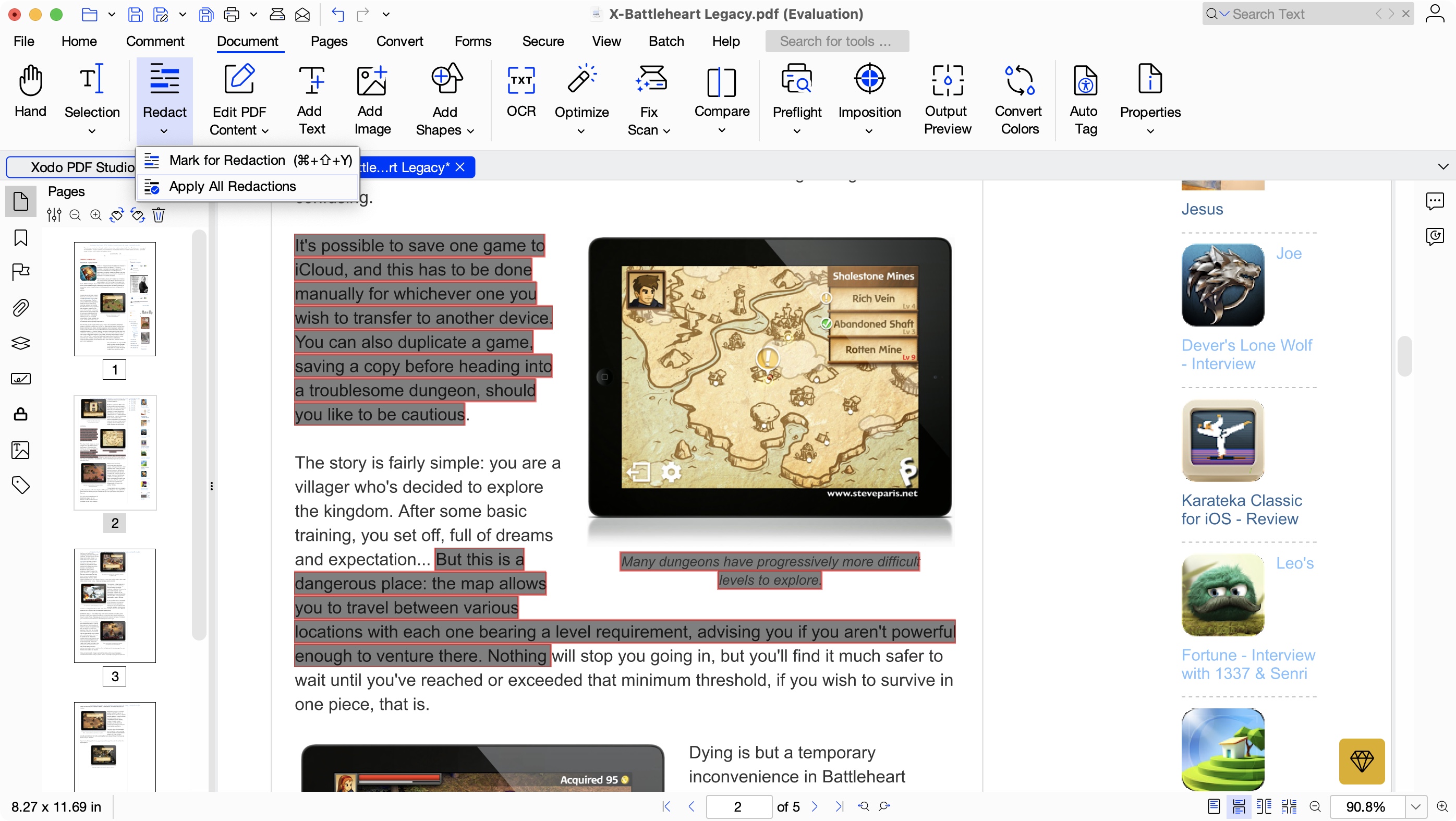
This is not a feature that is available from all PDF applications – in fact, it’s usually seen as one of the most advanced features, and not every app that includes it does a good job of it, making editing more of a chore than it should be.
I’m pleased to report that the Xodo Desktop App excels at editing existing content. When that tool is activated, you’ll see a faint blue rectangle surrounding the various text and image boxes in your document. Click on one to select it and move it around, or once selected, click inside the text box to alter its existing content, using the exact same font and size as the original. Now it doesn’t work like a word processor or a desktop publishing application: you can’t link text boxes together and make your copy flow from one to the next. This is for minor edits, and changes that don’t require having to go back to the original document and make alterations from there instead. But with those limitations in mind, for a PDF editing tool, it works fantastically well.
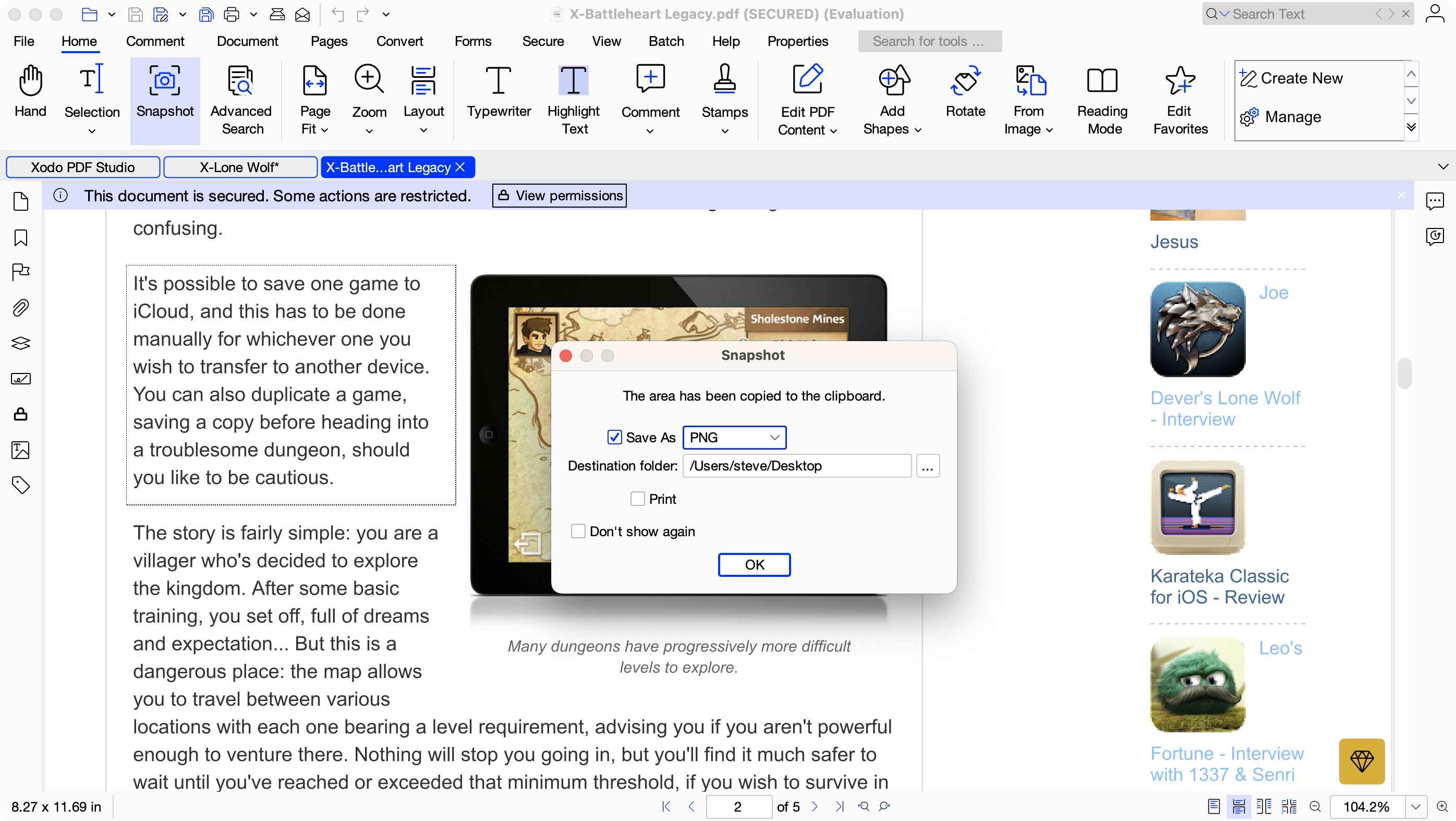
The only tool I thought was superfluous was the Snapshot, which as its name suggests, allows you to take a screenshot of a selected part of the PDF you’re working on. Sure, you have the option of selecting its format (PNG, JPEG, TIFF or GIF), or send it straight to a printer – which is novel – but every computer has screenshotting capabilities built-in, so why bother using that one? But that’s a minor quibble.
All in all, despite its icon design or tool organisation which could do with a little love, the Xodo Desktop App is an excellent PDF editor which makes it easy to perform even tricky tasks.
Should I buy the Xodo PDF Studio desktop app?
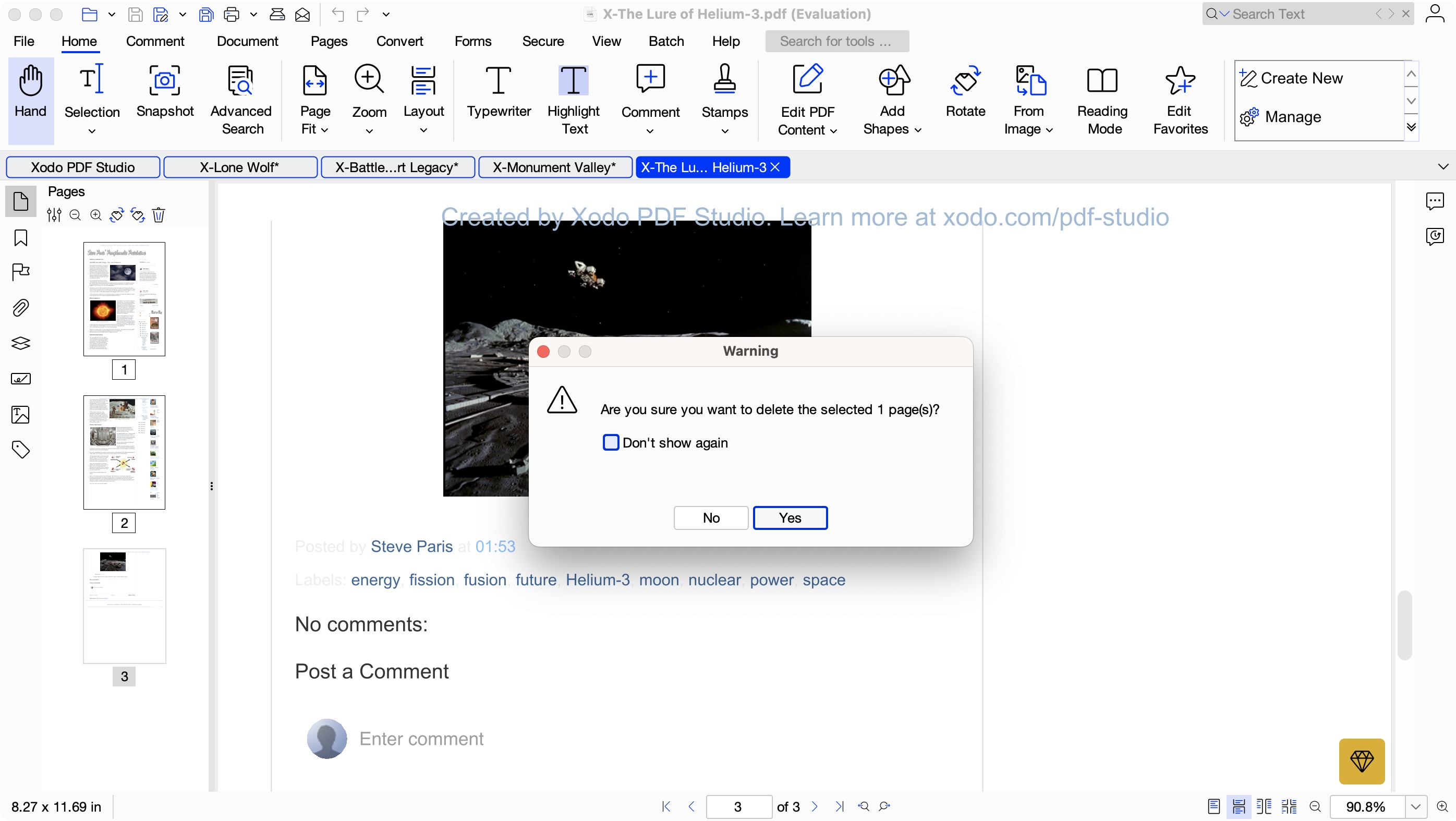
Buy it if…
You’re looking for a desktop PDF editor (ideal for increased security over an online service), with a boatload of tools that are easy to use, and includes well implemented, powerful advanced features.
Don’t buy it if…
You only need to make a few changes to a PDF, like delete a page, or reorder another, but all the other tools Xodo has is just overkill for your needs.
For more productivity tools, we tested the best free PDF readers, the best PDF reader for Mac, and the best PDF readers on Android.



